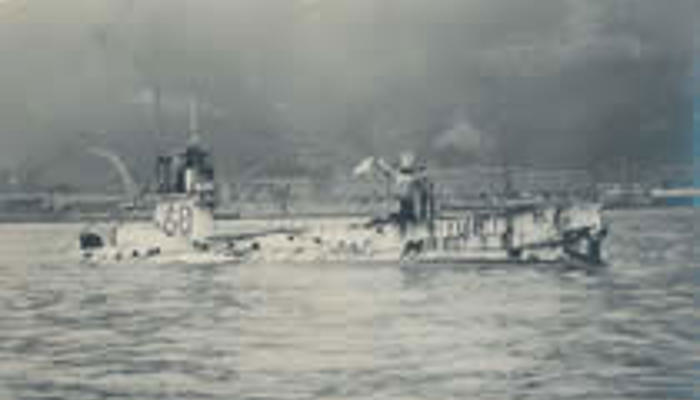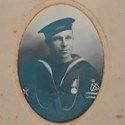Sinking a German torpedo boat, the destroyers moved in to pick up the survivors but came under fire from an enemy cruiser and had to abandon manned rescue boats.
In what was possibly the first action of its kind, one of a flotilla of British submarines, E4, closed in to cover the destroyers' retreat before its captain, Lieutenant-Commander Ernest W. Leir, embarked on the rescue of those left behind, still "in the vicinity of the enemy and in a visibility which would have placed his vessel within easy gun range of an enemy appearing out of the mist", as the citation read.
The rescue saved the lives of a British lieutenant and nine of his men, who were brought on board. But the boats also held two German officers and eight of their men, who were unwounded, as well as 18 who were badly wounded.
Leir did not have the space to take all of them on board. He left one of the German officers and six unwounded men to navigate the British boats to Heligoland. Before leaving, he saw that they were provided with water, biscuit, and a compass.
The dramatic tale of bravery and rescue, told in a despatch on October 17, 1914, led to the first citation of the Distinguished Service Medal, an award instituted only three days earlier. The citation appeared in the London Gazette on October 23.
At their July 28-29 sale, Woolley & Wallis of Salisbury are to offer one of the medals named in the citation, which is unique in other ways. Awarded to Petty Officer Alfred George Antram, who served aboard E4, it is thought not only to be the first DSM ever awarded to a submariner, but possibly the first ever pinned on a serviceman by the King. It is believed the awards were made at the investiture in alphabetical order, and Antram would have been the first to come forward when he was among those presented to King George V at Buckingham Palace on January 14, 1915.
The medal is one of a group of five awarded to Antram and is estimated at £2000-2500, although its historical significance could well bring a higher price, especially as it is offered with a wealth of photographs and other personal material consigned by a descendant of Antram.
Alfred George Antram was born on July 6, 1885 in Fratton, Portsmouth, signing up with the Royal Navy for 12 years, as Boy, 2nd Class, HMS Northampton, on October 20, 1902. Had he completed his 12 years service and left the Navy on schedule, he would have been discharged a week before the action that earned him his DSM.
Instead, he made a career of the Senior Service and served on a number of ships and shore bases, including HMS King Alfred in Hong Kong, and HMS Rosario. His Educational Certificate for Petty Officer is dated December 7, 1909.
He was discharged on May 1, 1925, the certificate showing 15 years and 8 months service in submarines. Married with children, he did not enjoy a long life after his service, dying on Christmas Day 1931 at the age of 46.
Ivan Macquisten
Unique medal surfaces with tale of courage
IT was just three weeks into the First World War when British destroyers engaged the enemy off the Heligoland Bight near Denmark.








